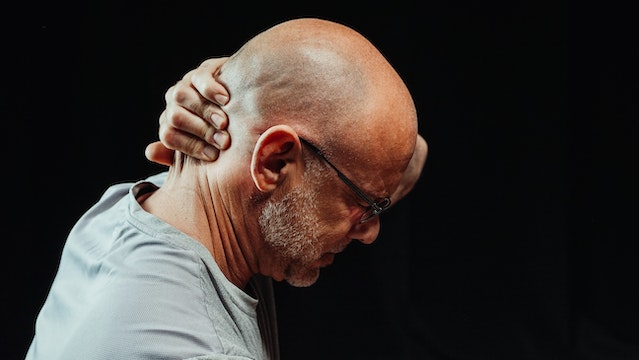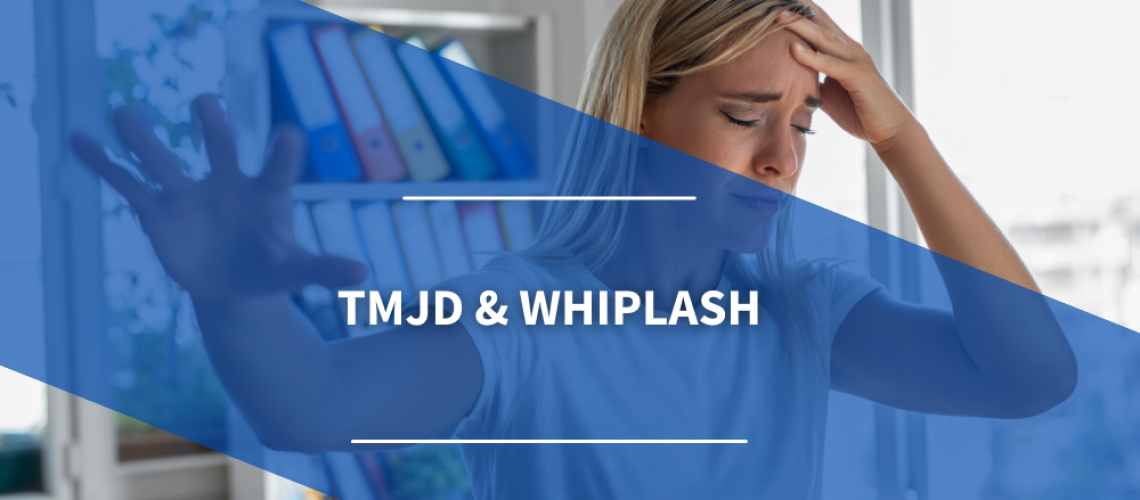
Did you know that suffering a whiplash injury can also result in TMJD (temporomandibular joint disorder)?
If you have had whiplash and jaw problems after an accident, then you’ll find this article useful. We’re going to take a look at the connection between whiplash and TMJD and discover what treatment is out there.
What is whiplash?
Whiplash is the result of someone’s head moving backward and forward with force, most commonly in a car accident — though it can also happen through other types of incidents, such as sporting injuries.
The most common symptoms usually appear within 24 hours of the trauma and can include:
- Painful or stiff neck
- Headaches, usually at the base of the skull
- Dizziness
- Blurred vision
- Fatigue
However, some people may experience more unusual symptoms, such as tinnitus (ringing in the ears), chronic headaches, and TMJD symptoms, which we’ll look at in the next section.
What’s the connection with TMJD?
A study published in The Journal of the American Dental Association (1) found that around one-third of people who had suffered whiplash in an accident went on to develop TMJD within a year after the incident.
The temporomandibular joints connect your lower jaw to your skull. TMJD describes a range of symptoms relating to these joints, which include:
- Pain around the jaw, which can radiate to the face
- Clicking around the jaw
- Headaches
- Difficulty moving the temporomandibular joints
There are lots of different causes, and one of these can be sudden trauma — for example, whiplash experienced as a result of a car accident.
During an incident like this, the temporomandibular joints are stressed and TMJD can develop as a result.
TMJ whiplash treatment
For whiplash TMJ, your doctor may advise you to:
- Take anti-inflammatory medication
- Self-massage the area
- Avoid using the jaw too much
- Use a cold compress
- Rest
You may also want to investigate manual osteopathy for whiplash. Manual osteopathy is a safe and non-invasive treatment using a variety of hands-on methods like massage and manipulation to restore function and ease pain.
When you come and see your manual osteopath, your manual osteopath will assess your condition and put together a personalized treatment plan to help ease inflammation and pain and restore the range of movement in your neck.
They will also advise you on exercises you can do at home to get you back to your best self.
Don’t suffer in silence!
There’s no need to suffer with whiplash TMJ symptoms in silence — the team at Osteo Health Calgary is here to help resolve your pain and discomfort.
Call us at 403-814-0404 or book an appointment online at osteohealthcalgary.janeapp.com
Our goal is to relieve the pain and discomfort that’s slowing you down so you can get back to living your very best life!
Approved by Indira Ravaeva. Manual Osteopath. Member of National Manual Osteopathic Society and Osteopathy Australia.
References
1. Salé H, Isberg A. ‘Delayed temporomandibular joint pain and dysfunction induced by whiplash trauma: A controlled prospective study,’ The Journal of the American Dental Association, DOI: https://doi.org/10.14219/jada.archive.2007.0320.
Other references used but not quoted in the article
1. Healthline website, ‘Whiplash Injury Overview’, December 13, 2021.
https://www.healthline.com/health/whiplash
2. Healthline website, ‘Temporomandibular Joint (TMJ) Disorders’, January 14, 2022.
https://www.healthline.com/health/tmj-disorders

